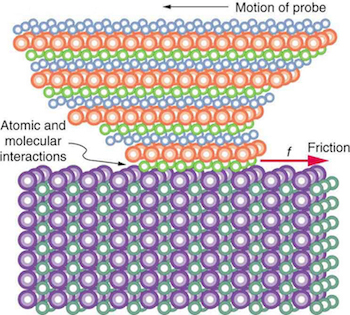Introduction¶

Friction underpins a huge variety of processes, at many different scales - from energy dissipation in molecular motors, to ice-skating and up to the dynamics of earthquakes. In recent years, many researchers have turned to nanoscale systems as a test bed for performing controllable experiments in friction, and significant progress in understanding the fundamental laws of friction at all scales has been achieved. Understanding the limits of the original basic laws of friction in nanoscale systems remains a topic of intense study, and many breakthrough results show how powerful earlier theories remain.
The topic of the project is the study of nanofriction between two atomically defined surfaces. In short, the task is to calculate friction at the atomic scale by simulating a friction experiment.
The purpose of the project is to design a simple computational experiment, execute it, gather data, and analyze the results. The aim is to give a taste of how research works from planning to execution. Computational tools are provided for running the simulations. However, the emphasis is on designing the study, and the available tools should not be a limiting factor in creativity.
There is no single correct way to carry out the project. You should not approach this as an assignment where you are expected to reproduce a specific answer. Think instead, as a group, what would be the best way to get interesting results.